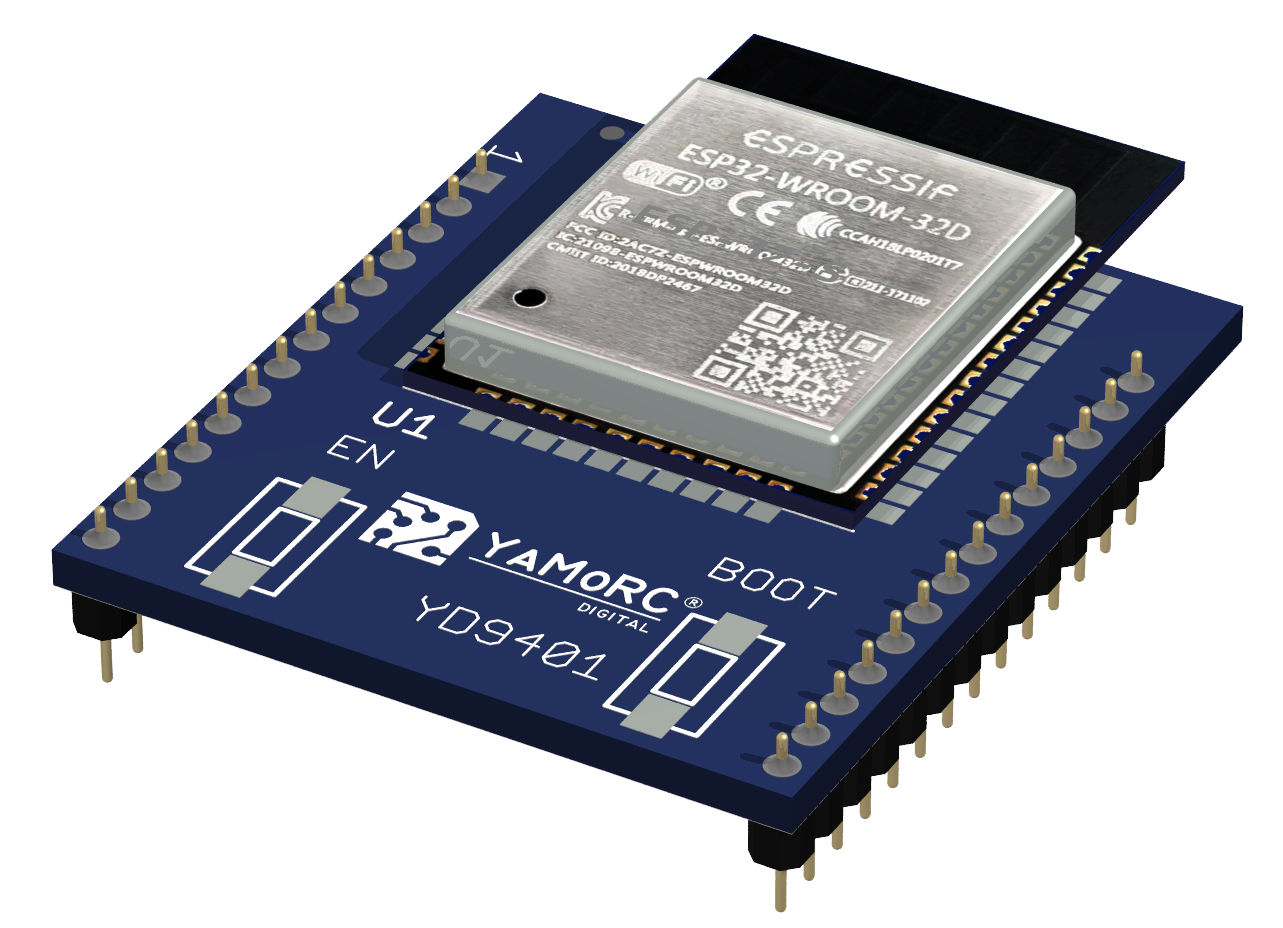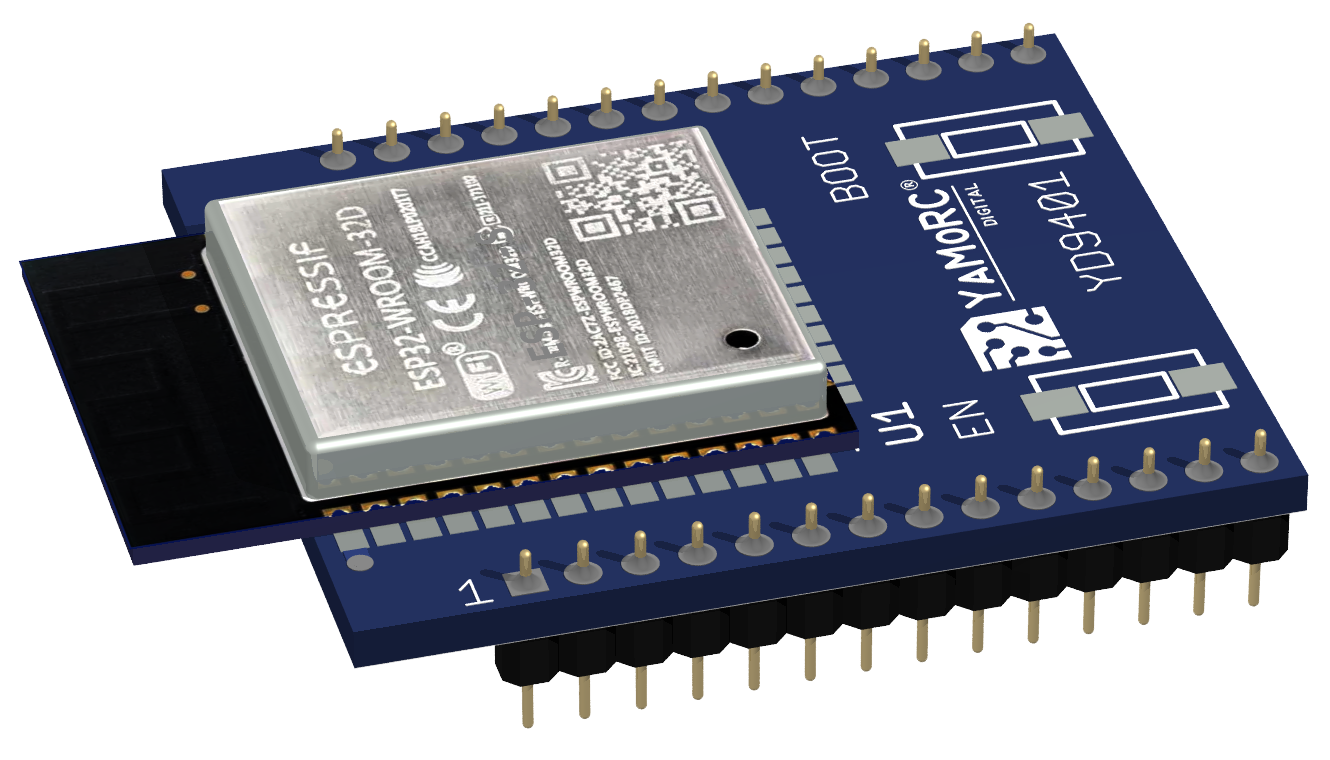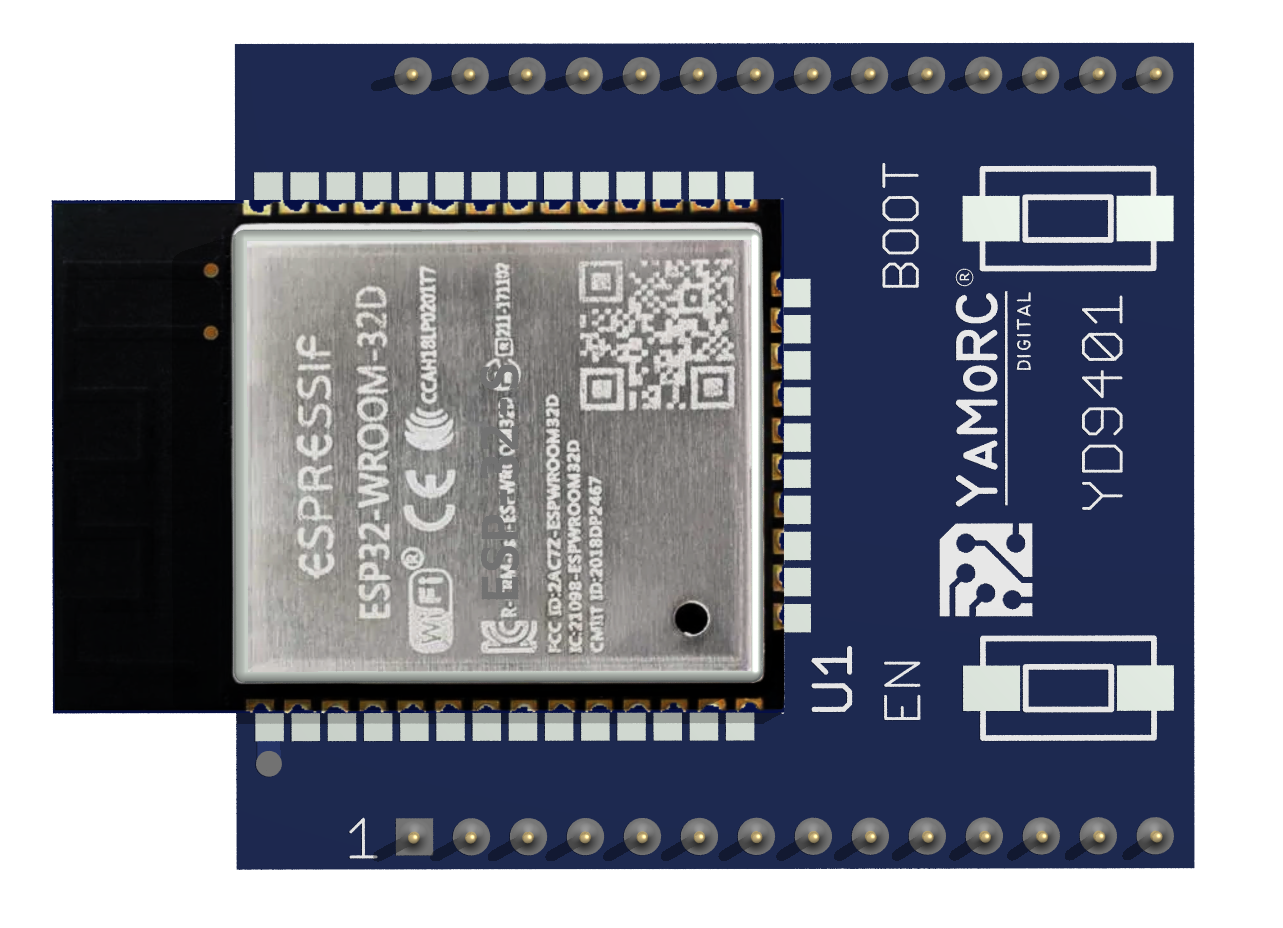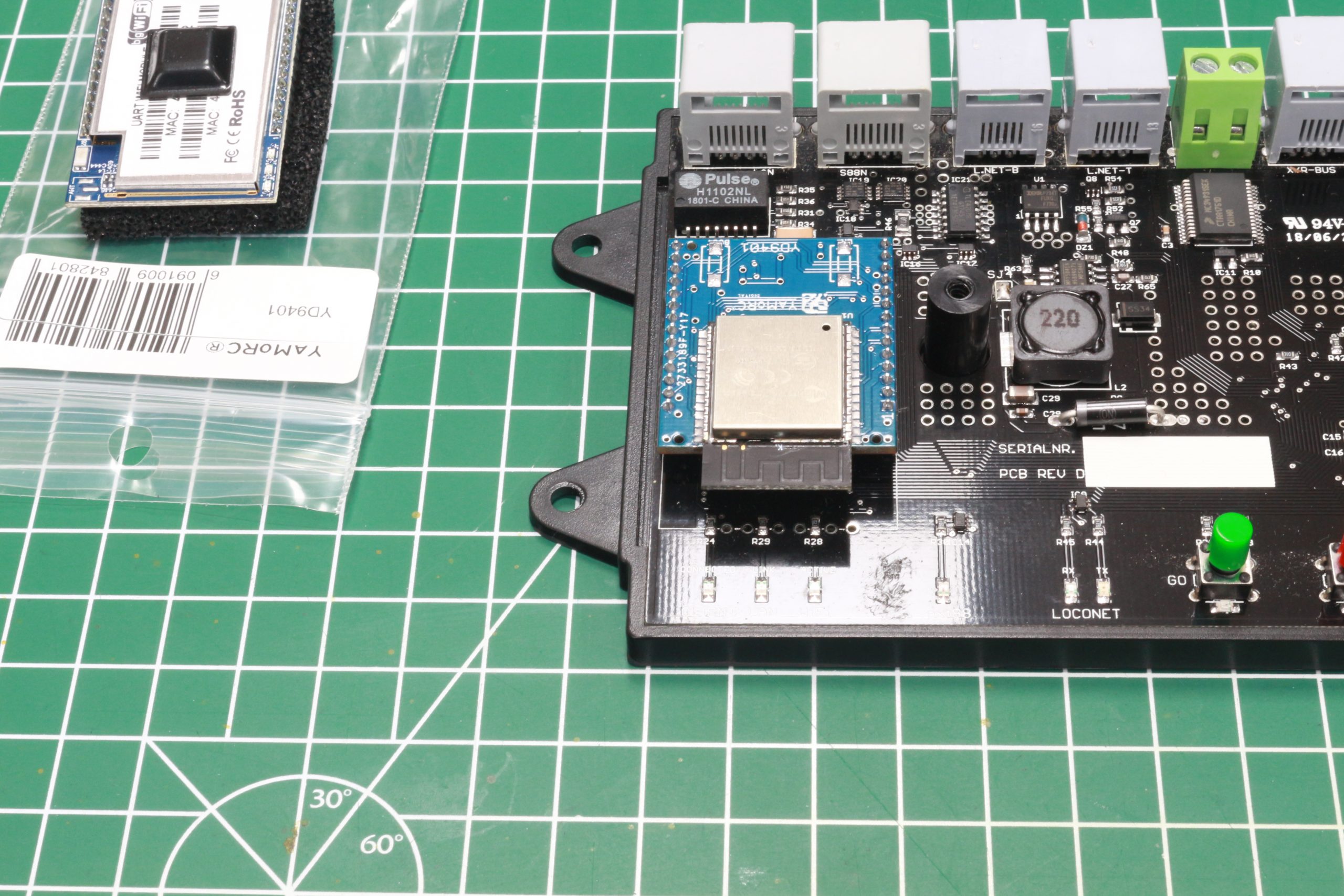YD9401
€62.50
The WiFi / LAN aftermarket upgrade to replace a Digikeijs DR5000`s RM04 outdated Wifi/LAN module.
It presents :
- WiFi/WLAN accesspoint for standalone operation without the need for an external router
- LAN 100baseT Ethernet port to integrate the gateway in your home network
- Built-in Webserver for configuring and operating the DR5000 with no need for PC or Phone/Tablet installed Software or Apps. Just runs from any browser !
- XpressNet-LAN, Z21®, LocoNet Binary, LocoNet LBServer, JMRI: WiThrottle and YD.Command** protocols on WiFi and LAN and … SIMULTANEOUS !
- Your DR5000 turns in to a YD7001 COMMAND STATION !
This upgrade can be done by the end-user. We will provide a new sticker to cover the screw holes. In case you do not trust yourselve to open the DR5000 and change the WiFi/LAN Module, we provide an upgrade service. Please contact us for details.
Note: Applying this upgrade voids your Digikeijs warranty on the product. YaMoRC cannot take over the warranty on the DR5000 part for legal reasons. On the YD9401 however, YaMoRC guarantees it`s normal warranty.
**)
Disclaimer: YD.Command is the internal YaMoRC communication protocol. It is not publicly open, nor does YaMoRC supply support 3rd parties to use it. Futher can it be subject to change on demand and at will of YaMoRC, without further notice or explanation.
Product Question
Technology
ES-Link is an open development of YaMoRC on the s88 bus. From that also emerges the name Extended S88 bus.
Physically It enables two adjacent YaMoRC modules to be interconnected by means of the ES-Link bridge: 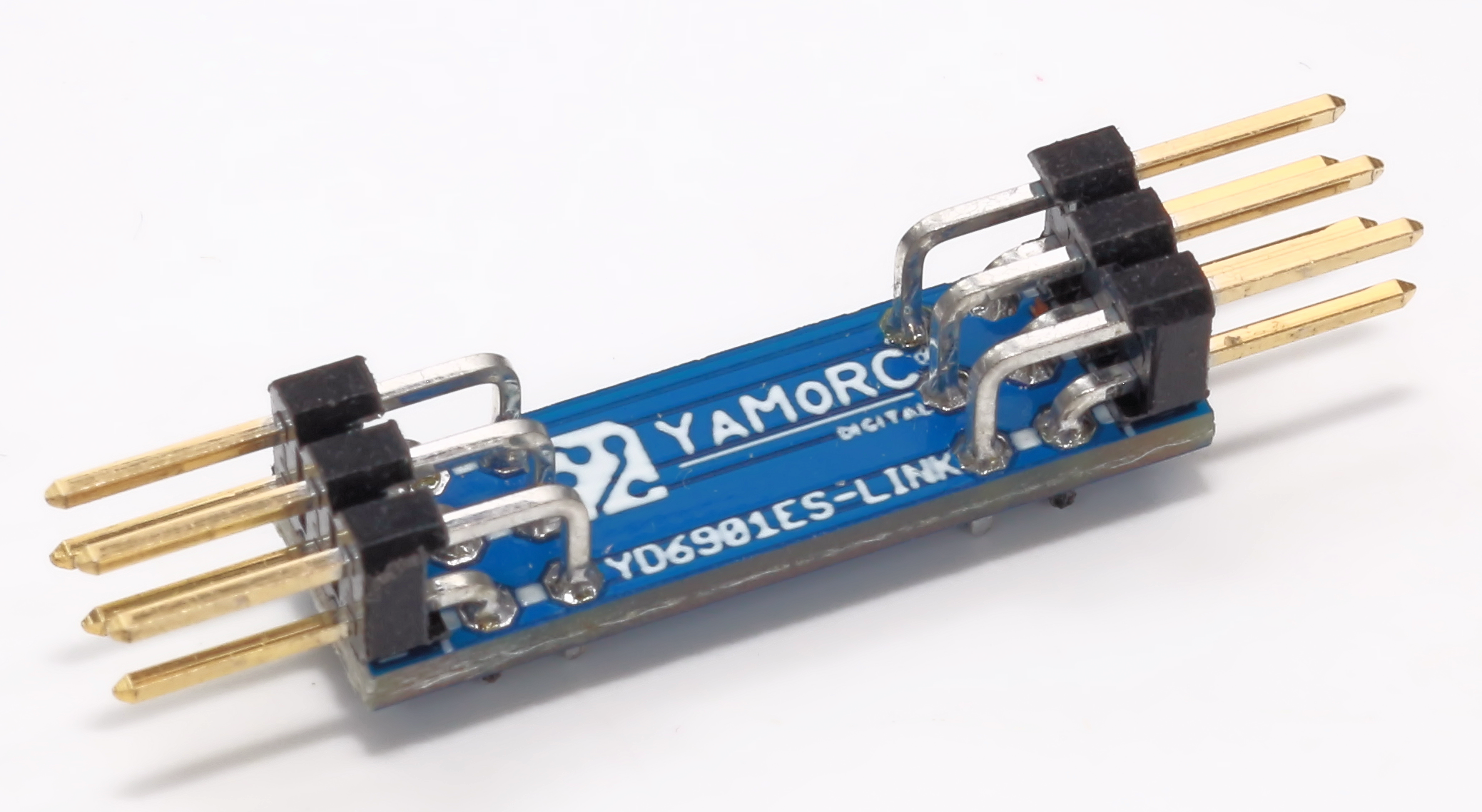 This comes in handy at the moment one e.g. wants to create a 32, 48 or larger input LocoNet feedback module by combining YD6016LN with multiple YD6016ES feedback modules.
This comes in handy at the moment one e.g. wants to create a 32, 48 or larger input LocoNet feedback module by combining YD6016LN with multiple YD6016ES feedback modules.
Usually so called s88 Master modules come with one ES-Link connector: ES-IN-Link. This connector is usually present on most YaMoRC modules with a USB connection. In that case, the ES-IN-Link also provides bi-directional serial communication based on a UART protocol at 9600 Baud. This enables modules which do not have a USB connection, still to be configured and updated when connected to a module with ES-IN-Link.
Such USB-less modules can have either ES-PGM-Link or ES-OUT-Link connectors. Both are Identical and must be connected to an ES-IN-Link module.
Finally a module can have ES-IN-Link and as well ES-OUT-Link. Such modules can be daisy-chained and provide so called transparent- or pass-through-mode.
When not used in configuration mode, the ES-IN-Link presents a standard s88 connection to s88 Feedback units.
Examples: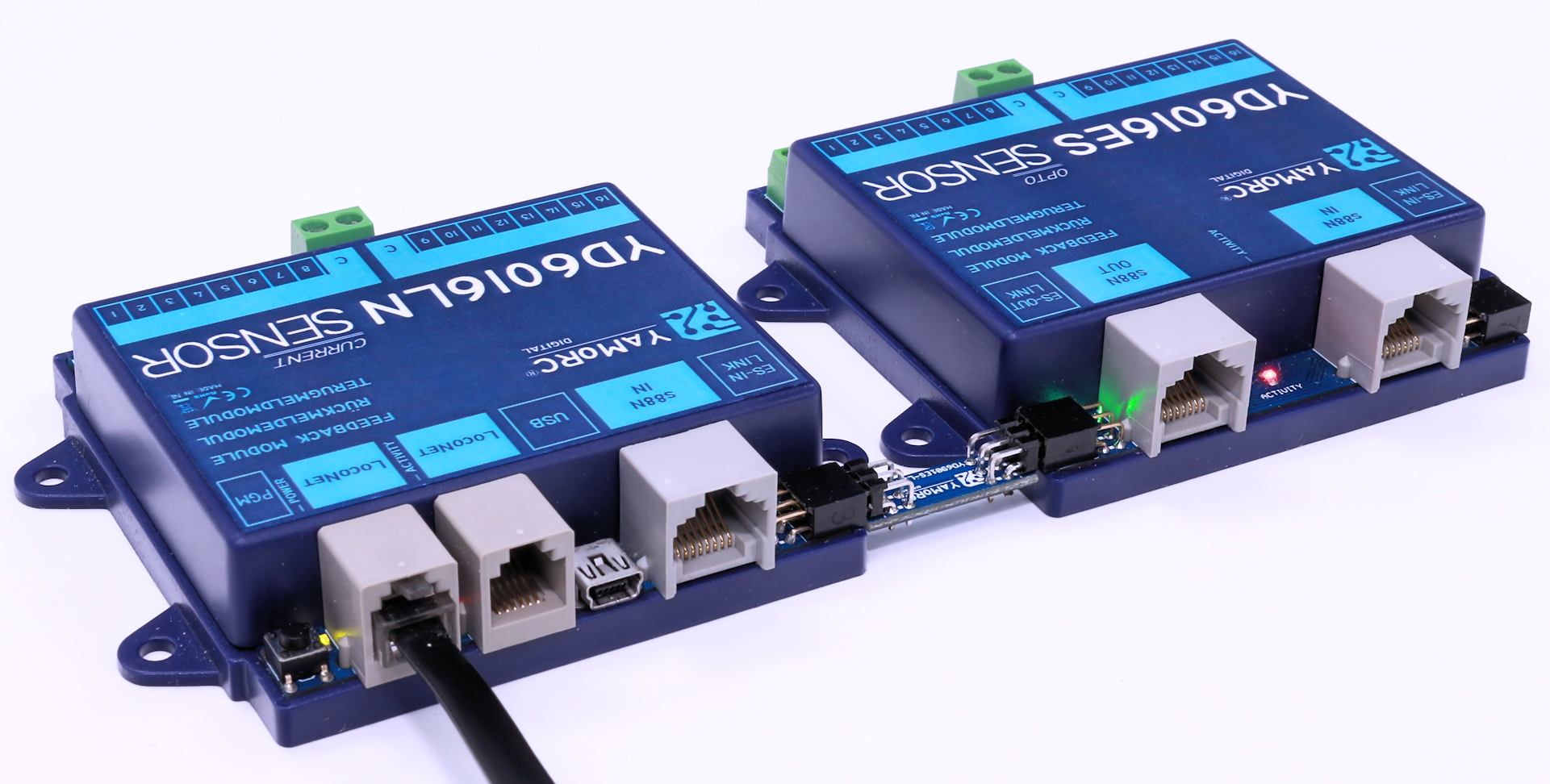
A 32-input LocoNet feedback module, created by combining YD6016ES and YD6016LN and the ES-Link stick.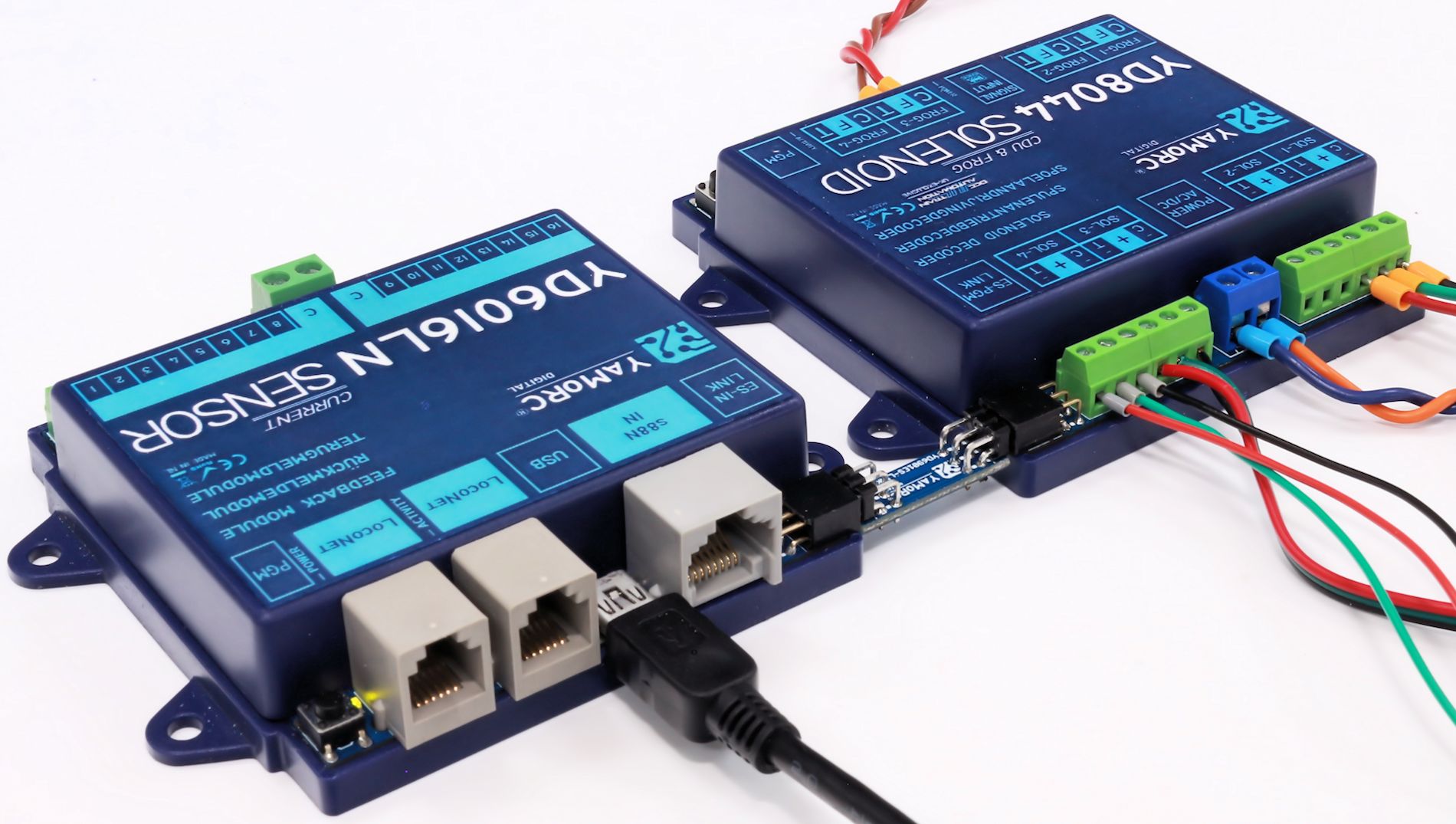
A YD8044 Decoder connected to a YD6016LN for configuration and update purposes.
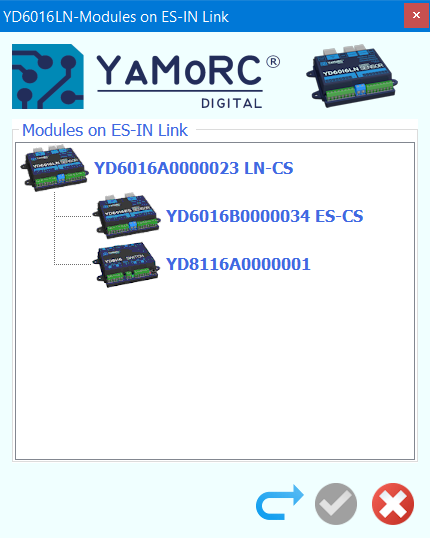
Feedback modules often are referred to after the method of how their sensors work.
YaMoRC offers 4 types of feedback inout sensors:
- Current Sense: Inputs that measure the current that flows from rail to rail caused by e.g. a loco’s motor, headlamps etc. Also passenger cars with interior illumination or freight wagons with conductive wheel axles.
Usage: Track (section, block, turnout) occupation detection. - OPTO: Inputs that are galvanically isolated from the module electronics by means of an optocoupler. Having this isolation, enables two different power sources to be used for module and e.g. tracks.
- GND: This is the most simple input type. It detects feedback when the input is connected to ground (GND). The module provides a so called pull-up resistor to turn the feedback off in case the input is left “open”. An important note to this type of input is, that for detecting track events, it cannot be used with boosters that uses so-called H-Bridges!
- RailCom: This type of input is able to detect messages coming from the loco sent by a RailCom enabled decoder. The module translates those messages in feedback messages to the command station. It is mainly used to detect which loco (address) is present in a stretch of track. For vehicles without a RailCom enabled decoder, this type also works as a Current Sense input.
Our YD8116 can be controlled either via “normal” DCC turnout addresses or via the relatively new DCCext format.
Briefly summarized, the difference:
With multi-aspect signals, switching via “normal” DCC addresses can become complicated. Different DCC switching commands must be combined in a certain time and sequence. This, of course, also consumes several DCC addresses.
If the DCCext format is used, only one DCC address is needed to control the different signal aspects for multi-aspect signals.
control. To the DCC address simply a value from 0 to 255 is sent. A specific signal aspect can be individually assigned to each value.
What is the advantage of DCCext?
- No complicated DCC address combinations have to be switched!
- The use of DCCext saves normal turnout addresses!
- Thus, as an example, for a DB H/V exit signal with four aspects, only one single turnout address is required, whereas conventionally two or more DCC addresses are required.
- Up to 255 switching aspects can be freely assigned.
For more detailed information, please refer to the RCN-213 standard. Please note that the command station you are using must support the DCCext format.
Comparing the DR5000 to an YD7001, one sees the following benefits:
- Mixed protocol environment possible, e.g. WLANmaus and HandyApp via Z21 and Traincontroller via Xpressnet, WDP or iTrain via LocoNet LAN.
- Use of LAN for Tool and MRR Software, as many have problems with USB.
- More WLAN clients than before.
- Feedback is no longer eaten away when using app and control software at the same time.
- USB stabilised with e.g. iTrain, WDP etc.
- New control panel that can be freely configured.
- DCCext signal control
- Loco functions up to 64
- Pom accessory decoder with corresponding hardware
- Distinction between emergency off and emergency stop without track voltage off.
- Indication of which connection to the YD7001 is currently active by green colouring of the corresponding COM port or the IP
- ES-Link functionality
- Improved feedback monitor both visually and technically (for example, the bell function)
- Guaranteed software maintenance
- Genuine technical support

